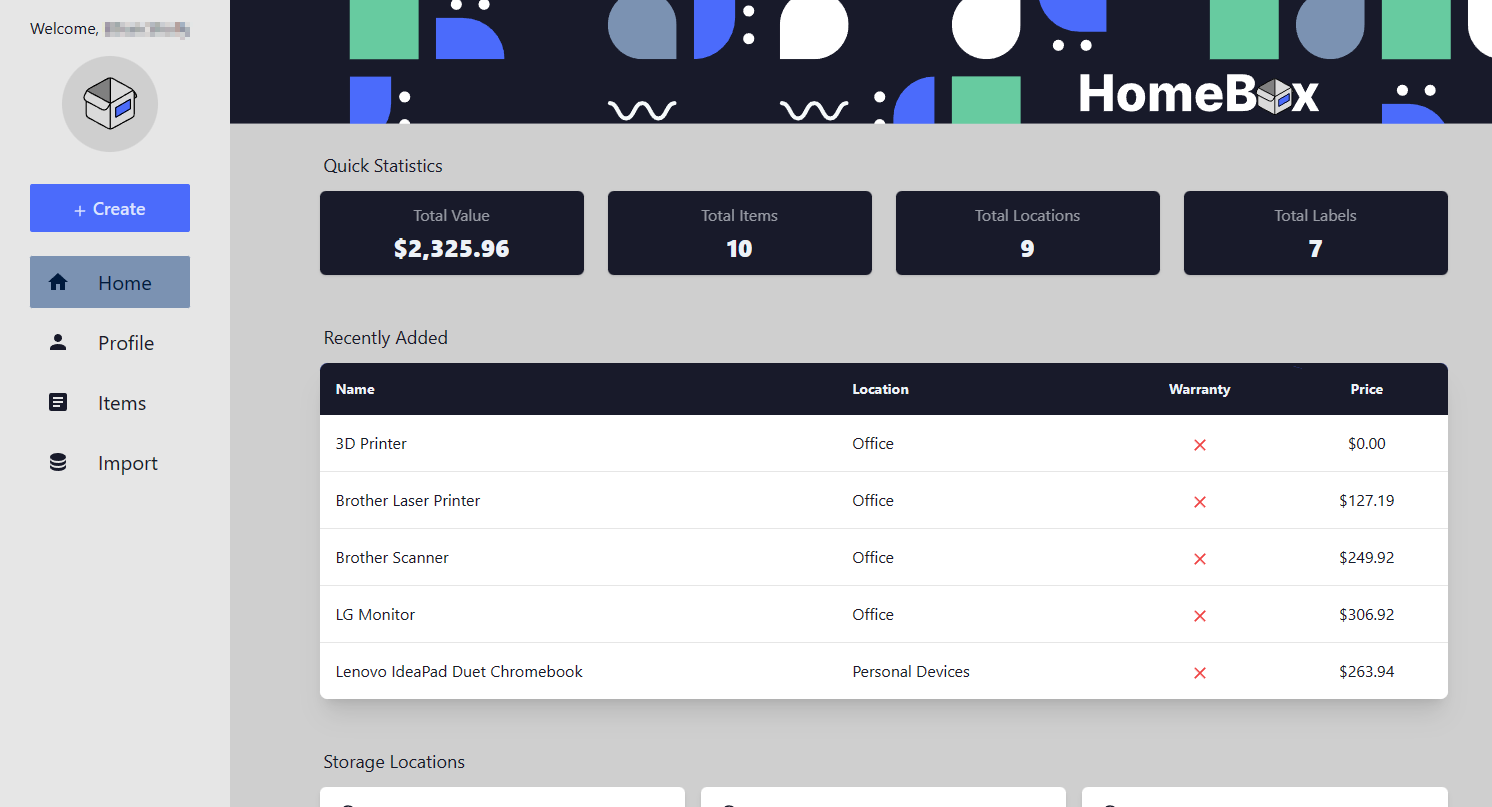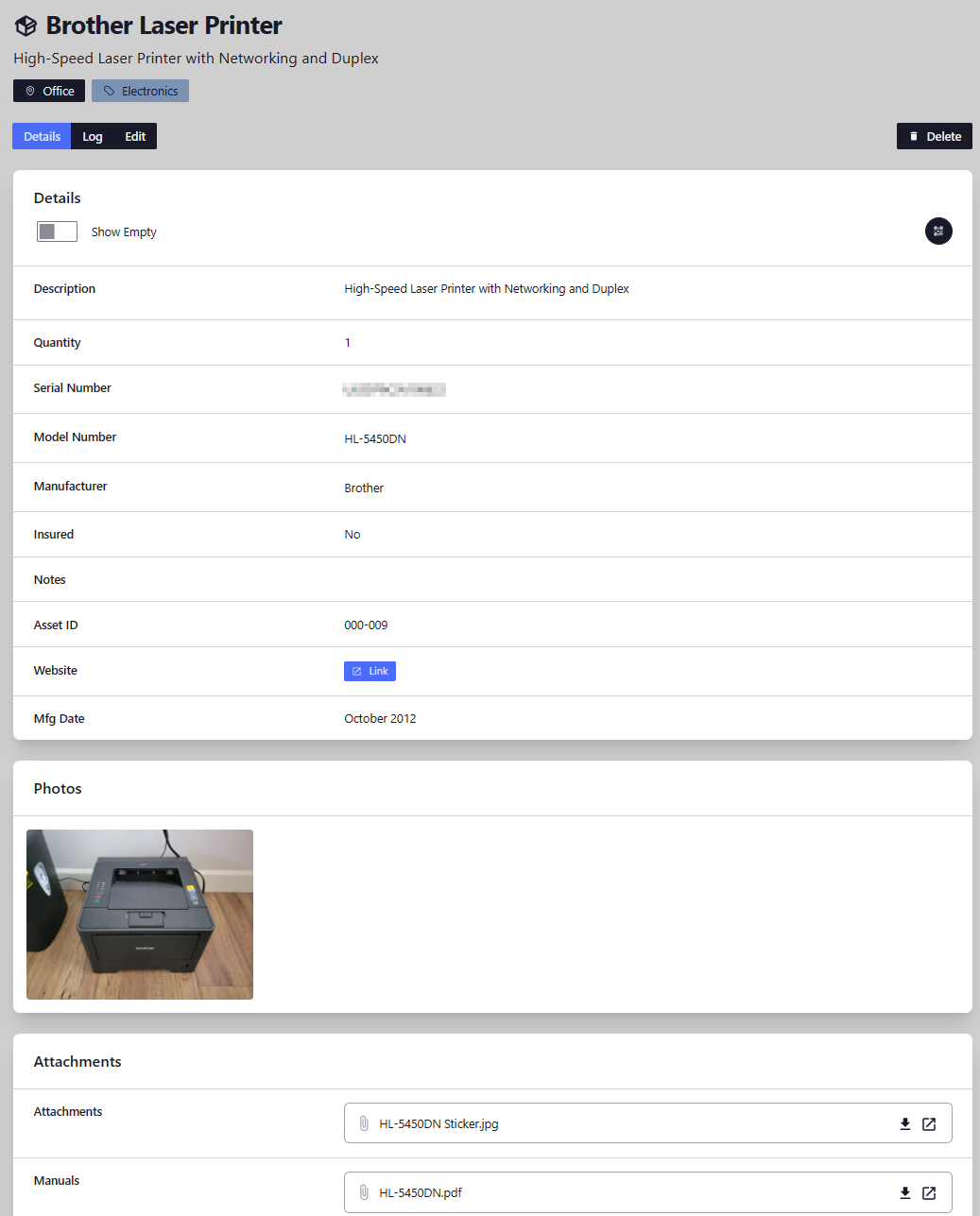App Spotlight: HomeBox - Home Inventory and Organization System
Self-hosted inventory, tracking, and organization software built for home users

Introduction
There has never been a great solution for tracking items and assets within a home environment. Existing self-hosted solutions like Snipe-It exist and are well-developed, but generally fall into the category of apps that are a bit too complex and large-scale for home users.
A few months ago, I stumbled across a relatively new application on reddit's self-hosted subreddit called HomeBox, which touts itself as "the inventory and organization system built for the home user." After having spent some time with it, below is overview of its capabilities, how I'm using it, and why I think it's a great solution to a long-existing problem.
In a nutshell...
HomeBox is a lightweight home inventory tracking system built specifically for home users. The execution of the application focuses on adding assets to specific locations (which can be user-specified) while including details such as warranty, purchase price, serial/model numbers, etc. Additionally, users can upload relevant attachments – photos, documents, receipts, etc. – to each asset for easy reference when needed. Custom, user-specific labels are also available for those who need another layer of organization.
Note that the application is technically still in beta according to the site's documentation – but I haven't come across any notable bugs in my usage.
HomeBox's biggest missing feature (as of the time of writing) is export functionality, which the developer claims is in active development. The lack thereof would make it difficult to extract some of the data that might be necessary should you require it to support insurance claims, etc. It's also [currently] missing some other features some might consider non-negotiable, such as accompanying QR codes to tag physical assets with.
| Pros | Cons |
|---|---|
| Lightweight | Technically still in beta |
| Easy installation | Export functionality not yet released |
| Modern interface | No internal backup/snapshot functionality |
| High granularity for asset detail tracking | Doesn't support non-SQLite databases |
| Attachments for individual assets | No system to tag assets with generated QR codes |
| Portable |
Installation
In the typical self-hosted fashion, HomeBox offers installation via Docker, which is how I'm running it within my homelab. I've provided my docker-compose configuration below.
The variables are fairly straightforward, and you'll notice I was able to map two separate volumes – one to store the application's SQLite database on a high-performance SSD, and then everything else on my NAS (as I don't want the item attachments filling up my high-performance SSD storage).
homebox:
image: ghcr.io/hay-kot/homebox
container_name: homebox
restart: unless-stopped
environment:
HBOX_LOG_LEVEL: info
HBOX_LOG_FORMAT: text
HBOX_WEB_MAX_UPLOAD_SIZE: 500
HBOX_OPTIONS_ALLOW_REGISTRATION: 'true'
volumes:
- ${APPDATA}/homebox/homebox.db:/data/homebox.db
- ${CONTENT}/home/assets/homebox:/dataUsage
As mentioned above, I've been using HomeBox for several weeks. The actual entry of assets can be incredibly time-consuming, so I've limited myself to the entry of one asset a day (~10 minutes, depending on how much information I want to provide) to ensure I'll eventually be able to upload everything before burning out.
I'm still trying to find my groove, but so far I've managed to group my assets into the following categories:

And have been trying to hit most of the rooms in my house (note that some of these were pre-populated – I'm not sure I have any assets worth tracking in my bathroom...):

Finally, below is a view of one of the actual assets in my inventory, which should provide a good overview as to some of the fields that can be populated. My own personal goal is to provide the following for each asset:
- Model number
- Serial number
- Link to the manufacturer's website
- Manual
- Photo of asset and technical sticker
- Invoice from seller

Final Thoughts
Despite being in beta, HomeBox successfully fills a niche in the self-hosted space. And while it's still missing one or two key pieces of functionality, the current pace of development seems to indicate some of these things aren't far away.
Feel free to drop any questions in the comments, or just drop in to let us know how your experience with HomeBox has been.
Thanks, and happy selfh.st/ing!
Note: selfh.st/ed is not affiliated with the developers of HomeBox in any way and are not receiving compensation of any kind for featuring the application on the site.


Comments